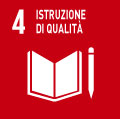- Docente: Sara Valentinetti
- Crediti formativi: 9
- SSD: FIS/01
- Lingua di insegnamento: Inglese
- Moduli: Sara Valentinetti (Modulo 1) Enrico Balugani (Modulo 2)
- Modalità didattica: Convenzionale - Lezioni in presenza (Modulo 1) Convenzionale - Lezioni in presenza (Modulo 2)
- Campus: Ravenna
- Corso: Laurea in Building Construction Engineering (cod. 5897)
-
Orario delle lezioni (Modulo 1)
dal 17/02/2025 al 08/04/2025
-
Orario delle lezioni (Modulo 2)
dal 14/04/2025 al 11/06/2025
Conoscenze e abilità da conseguire
Through this course the student learns the basic elements of Classical Mechanics: vectorial analysis, kinematics laws, dynamics both of point and of single body, work and energy concept. At the end of this course, students will learn: 1) to use mathematical models as a medium for quantitative reasoning and describing physical reality, 2) to apply the classical conservation laws as a basis of deriving and understanding physics principles, 3) to describe physics concepts verbally, graphically, and mathematically, 4) problem solving skills related to physics principles.
Contenuti
Measurements and unities
Introduction. Physical quantities and their measurements. Fundamental and derived quantities. Dimensions and unit of measurement.
Vectors
Free and applied vectors. Operations between vectors with and without reference systems.
Kinematics in two and three dimensions
Motion along a straight line, velocity and acceleration; some special motions; vector representation of velocity and acceleration; relative motions, composition of velocity and accelerations and Galilean transformations; curvilinear motion, velocity and tangential and normal accelerations; circular motion, angular, radial and transversal velocities and angular acceleration; Poisson transformation; relative motions with respect to reference systems in translational and rotational motion; Coriolis acceleration.
Force, quantity of motion and momenta
First law of the dynamics (the law of inertia); inertial reference systems; forces and the second (2nd) law of dynamics; some examples about forces; third law of dynamics; some applications of second law; elastic force and resolution of the equation of motion for harmonic oscillations; friction and its properties; resistance of a medium and limit velocity; circular uniform motion, centripetal force and motion discussion in the rotational reference system; quantity of motion (linear momentum); torque of a force; angular version of the 2nd law of dynamics.
Work and energy
Work of a force and power; kinetic energy; unit of the energy; work of a constant force; potential energy and relation with the work; relation between the torque of a force and the potential energy in the curvilinear planar motion; conservation of the energy of a particle and conservative forces; non-conservative forces and energy dissipation.
Particle systems, collisions, rigid bodies and equilibrium
Motion of the centre of mass of a particle system, isolated system; system subjected to external forces; reduced mass; angular momentum of a particle system; energy conservation of a particle system and total energy; internal energy of a particle system; particle collisions; elastic and inelastic collisions; rigid body and its angular momentum; equation of motion for the rotation of a rigid body; rotational kinetic energy of a rigid body; pure rolling motion; equilibrium of a rigid body.
Testi/Bibliografia
- Hallyday Resnick - Fundamentals of Physics - Vol. 1
- Any university book of classical mechanics.
Metodi didattici
Frontal lessons will be used.
Slides will be used during lessons complemented with hand-written explanation directly projected on the slides by the professor.
Slides will be available on Virtuale: https://virtuale.unibo.it/ before the beginning of the lessons in order to avoid students to loose time in recopying them.
No recording will be available.
Modalità di verifica e valutazione dell'apprendimento
Final exam, only written, with:
- 3/4 exercises. 90 minutes. Any kind of book, personal note, formulary, slides can be used but only in printed version. Neither pc nor smartphone allowed.
- 2 questions about theorems, demonstration and so on. 40 minutes. No printed supports are allowed
In order to be admitted to the exam, previous booking on AlmaEsami is mandatory.
No online exams are allowed.
During exam only black/blue pens are allowed, no pencils.
Strumenti a supporto della didattica
The presence at the final exams must be confirmed at least 3 days before exam date by signing up on the web page:
[http://almaesami.unibo.it/almaesami/studenti]
Orario di ricevimento
Consulta il sito web di Sara Valentinetti
Consulta il sito web di Enrico Balugani
SDGs


L'insegnamento contribuisce al perseguimento degli Obiettivi di Sviluppo Sostenibile dell'Agenda 2030 dell'ONU.
